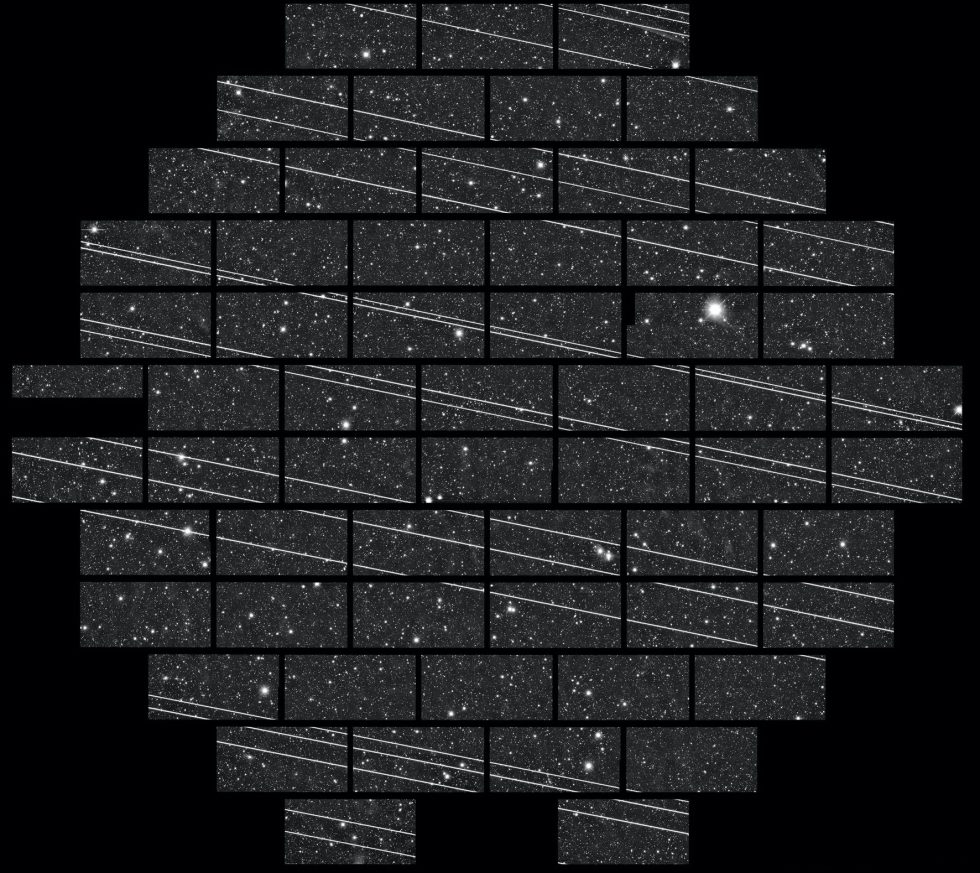
Enlarge / Artist’s impression of low-Earth orbit satellites like those launched by SpaceX and OneWeb.
Broadband satellites being launched by SpaceX and other companies will inevitably have a negative impact on astronomers’ ability to observe the night sky, according to a new report by astronomers. There are no mitigation strategies that can completely eliminate the satellites’ impact on astronomical observations—other than not launching satellites at all—but the report includes recommendations for how satellite operators can minimize disruption and how observatories can adjust to the changes.
The report released this week is titled, “Impact of Satellite Constellations on Optical Astronomy and Recommendations Toward Mitigations.” The report resulted from the recent Satellite Constellations 1 (SATCON1) workshop, which was organized jointly by the National Science Foundation’s NOIRLab and the American Astronomical Society (AAS). SpaceX engineers participated in the online workshop, but the report was written by members of the SATCON1 Scientific Organizing Committee and represents their consensus views. The committee members hail from NOIRLab, AAS, the Lowell and Steward observatories in Arizona, the Rubin Observatory in Chile, the University of Michigan, UC-Davis, Smith College, and the Association of Universities for Research in Astronomy (AURA).
The report said:
Changes are required at both ends: constellation operators and observatories. SpaceX has shown that operators can reduce reflected sunlight through satellite body orientation, Sun shielding, and surface darkening. A joint effort to obtain higher-accuracy public data on predicted locations of individual satellites (or ephemerides) could enable some pointing avoidance and mid-exposure shuttering during satellite passage. Observatories will need to adopt more dynamic scheduling and observation management as the number of constellation satellites increases, though even these measures will be ineffective for many science programs.
SpaceX has so far launched over 600 satellites and OneWeb has launched 74. Both companies plan to eventually launch tens of thousands of satellites into low-Earth orbits and provide broadband to areas that lack fast wired service. Amazon is also planning to launch thousands of satellites. Because of their low-Earth orbits (LEO), the satellites will provide lower latency than traditional satellite networks.
Musk predicted no impact
SpaceX CEO Elon Musk said in March that he is “confident that we will not cause any impact whatsoever in astronomical discoveries.” He said the satellites are visible immediately after launching because “they’re tumbling a little bit” and essentially “blink” or “reflect in ways that is not the case when they’re on orbit.” Once satellites stabilize and raise their orbits, they shouldn’t cause problems for astronomers, Musk claimed.
But it’s been over a year since SpaceX began launching broadband satellites, and astronomers have now “accumulated enough observations of constellation satellites like those being launched by SpaceX and OneWeb and run computer simulations of their likely impact to begin to understand the magnitude and complexity of the problem,” the SATCON1 report said.

Enlarge / A wide-field image (2.2 degrees across) from the Dark Energy Camera on the Víctor M. Blanco 4-m telescope at the Cerro Tololo InterAmerican Observatory, taken on November 18, 2019. Several Starlink satellites crossed the field of view.
“If the 100,000 or more LEOsats proposed by many companies and many governments are deployed, no combination of mitigations can fully avoid the impacts of the satellite trails on the science programs of current and planned ground-based optical-NIR [near-infrared] astronomy facilities,” the report said. “Astronomers are just beginning to understand the full range of impacts on the discipline. Astrophotography, amateur astronomy, and the human experience of the stars and the Milky Way are already affected.”
Report authors said they “performed simulations of representative LEOsat constellations” in order to reach their conclusions. Recommendations for minimizing harms to astronomy “are based on work by and collaboration between astronomers and SpaceX,” but these are “intended for a broad audience, and especially the satellite constellation industry as a whole,” the report said.

